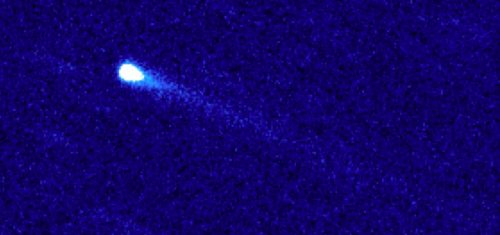- Date: 18 Aug 2017
- Comments: (0)
- Categories: For Astronomers, For Everyone
Celebrate the Large and Long Program! is a series of blog posts which showcase the high-impact science under the Large and Long Program of Gemini Observatory.
What is the Large and Long Program?
The Large and Long Program (LLP) is one of five observing modes Gemini offers to users of our telescopes. These five modes categorize projects based on length and weather conditions required for the observations. Classically, Gemini accepts proposals on a six month basis and recipients awarded with observing time complete their observations within that given semester. Large and Long Programs, on the other hand, provide more flexibility for long term research and last anywhere from one to three years. This extended time frame promotes collaboration across communities and produces significant and high-impact science. Here, we ask past and present Large and Long Programs to share a little about their research and experience with Gemini Observatory.
Observational Characterization of Active Main-Belt Comets and Main-Belt Comet Nuclei

The newly reactivated main-belt comet 238P/Read observed by Gemini-N on 2016-08-06
1. Principal Investigator: Name and Affiliation?
Henry Hsieh (Planetary Science Institute; Academia Sinica)
2. How would you describe your Large and Long Program?
Main-belt comets are a subset of the class of active asteroids, which are objects with asteroidal orbits but which exhibit comet-like mass loss or activity in the form of a dust coma or dust tail, for example. This mass loss can arise for various reasons such as a recent impact by another asteroid or an asteroid spinning so fast that material on its surface, or even the entire asteroid, becomes unstable and is flung into space. In the case of main-belt comets, their observed mass loss is believed to be due to sublimation of near-surface ice which then ejects dust into space, i.e., the same mechanism that causes activity on classical comets. Unlike classical comets, however, which originate in the cold outer solar system, main-belt comets orbit in the main asteroid belt and so the fact that they have been able to preserve ice near their surfaces in such a warm location essentially over the age of the solar system is surprising. They also present an intriguing opportunity to probe hypotheses that icy objects from the asteroid belt played a significant role in the delivery of water to the early Earth, and also trace the volatile ice content of the inner solar system in general. In this way, main-belt comet research may provide crucial insights into the formation of our solar system and the rise of life both here in our own solar system and potentially elsewhere. Using main-belt comets to trace volatile material in the solar system requires a detailed understanding of their physical characteristics and activity in order to constrain thermal and dynamical evolution models, and estimating the total abundance and distribution of icy main-belt objects, both active and inactive. This Gemini Large and Long Program aims to obtain regular monitoring observations of eight of the currently known main-belt comets, seven of which are expected to be active between 2016 and 2019, in order to study the characteristics of both their activity and nuclei, allowing comparisons to previous occurrences of activity for a particular objects, to each other, and to other asteroids and comets. This program is part of a larger observational program to characterize main-belt comets over the next three years utilizing several other telescopes around the world, including the Canada-France-Hawaii Telescope, the Discovery Channel Telescope, and the Magellan Telescopes.
3. Why is Gemini best suited for this research?
Gemini’s queue-scheduled observing mode is ideally suited for the short series of observations we need to perform over long periods of time to monitor activity evolution over an object’s entire active period (~1-2 years) or determining an object’s phase function (which requires photometry to be measured for an object over a range of phase angles, which typically take several months to vary enough to provide good sampling of the phase function). The small sizes of most main-belt comet nuclei and their often weak activity also makes the 8-m Gemini telescopes ideal for this program given their ability to obtain high-quality images of extremely faint objects. Notably, Gemini-N actually made the key discovery of one of the first three main-belt comets to be found that ultimately led to their recognition as a new type of comet.
4. What has been the best part of your experience with the Large and Long Program?
This Gemini LLP just began in August 2016 at the start of the 2016B semester, but we have already been able to announce the third confirmed reactivation of main-belt comet 238P/Read, whose activity we will continue to monitor as part of this program and use to understand how the comet’s activity has changed over its last three active periods for which we now have data.

Photos of LLP team members: [top row, left to right] Henry Hsieh, Planetary Science Institute; Nick Moskovitz, Lowell Observatory; Chad Trujillo, Northern Arizona University; [bottom row, left to right] Matthew Knight, University of Maryland; Masateru Ishiguro, Seoul National University; Scott Sheppard, Carnegie Institution of Washington





